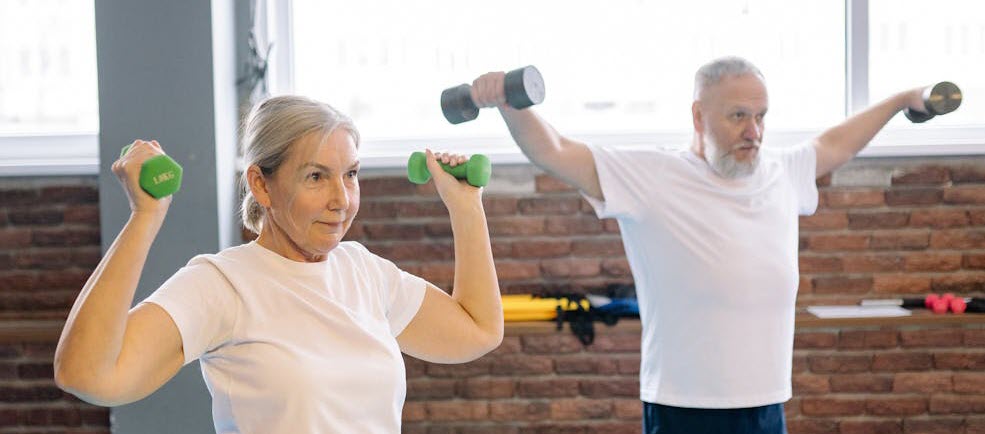
Why Strength Training is Essential for Healthy Aging
As we age, staying active becomes increasingly important for maintaining our health and quality of life. While many people over 50 prioritize walking, swimming, or other forms of cardiovascular exercise, strength training is often overlooked. However, it is a critical component of a well-rounded fitness routine, especially for older adults. Strength training, or resistance training, offers numerous benefits that support healthy aging, from preserving muscle mass to enhancing bone density and improving balance. Here’s why strength training should be a priority as you age.
The Importance of Muscle Mass
As we grow older, our bodies naturally lose muscle mass in a process known as sarcopenia. This decline typically begins in our 30s and accelerates after 50. Without intervention, sarcopenia can lead to reduced strength, decreased mobility, and a higher risk of falls and fractures. Strength training is one of the most effective ways to combat this loss of muscle mass. By regularly challenging your muscles through resistance exercises, you can preserve, and even build, muscle strength as you age.
Strength Training and Bone Health
Osteoporosis, a condition characterized by weakened bones, is another common concern for older adults, particularly women. Strength training plays a crucial role in preventing and managing osteoporosis by increasing bone density. Weight-bearing exercises, such as lifting weights or using resistance bands, stimulate bone growth by applying stress to the bones. This stress encourages the bones to become stronger and denser, reducing the risk of fractures.
Improved Balance and Coordination
Falls are a leading cause of injury among older adults, often resulting in serious consequences. Strength training not only improves muscle strength but also enhances balance and coordination. Exercises that focus on building lower body strength, such as squats and lunges, can significantly reduce the risk of falls. Additionally, improved balance helps older adults maintain independence and perform daily activities with greater confidence.
Enhanced Metabolism and Weight Management
As muscle mass decreases with age, so does metabolism, making it easier to gain weight. Strength training boosts metabolism by increasing muscle mass, which in turn burns more calories, even at rest. Maintaining a healthy weight is crucial for reducing the risk of chronic conditions such as heart disease, diabetes, and arthritis. Strength training helps regulate body composition by promoting fat loss and preserving lean muscle.
Mental Health Benefits
The benefits of strength training extend beyond physical health. Regular exercise, including strength training, has been shown to improve mental well-being by reducing symptoms of anxiety and depression. It can also boost self-esteem and provide a sense of accomplishment. The social aspect of strength training, whether through group classes or working out with a friend, can further enhance mental health by fostering connections and reducing feelings of isolation.
How to Get Started
If you’re new to strength training, it’s important to start slowly and focus on proper form to avoid injury. Begin with light weights or resistance bands and gradually increase the intensity as your strength improves. Aim for at least two strength training sessions per week, targeting all major muscle groups. Consider working with a certified trainer who can create a personalized plan based on your fitness level and goals.
Conclusion
Strength training is a powerful tool for promoting healthy aging. By incorporating it into your fitness routine, you can preserve muscle mass, protect bone health, improve balance, and enhance your overall well-being. It’s never too late to start, and the benefits are well worth the effort. Whether you’re lifting weights, using resistance bands, or simply doing bodyweight exercises, strength training can help you age gracefully and maintain your independence.
References and Additional Resources
1. Books:- “Strong Women Stay Young” by Miriam E. Nelson: This book offers a comprehensive guide to strength training for older adults, including practical exercises and success stories.
- “The New Rules of Lifting for Life” by Lou Schuler and Alwyn Cosgrove: A great resource that covers strength training techniques for all ages, with a focus on functional fitness.
- National Institute on Aging (https://www.nia.nih.gov/health/exercise-physical-activity): Provides detailed information and resources on the benefits of strength training and other physical activities for older adults.
- Mayo Clinic (https://www.mayoclinic.org/healthy-lifestyle/fitness/in-depth/strength-training/art-20046670): Offers advice on how to safely start a strength training routine, with tips tailored to seniors.
- The Benefits of Resistance Training in Older Adults: A study published in The Journal of Aging Research highlights the positive impact of strength training on muscle mass, bone density, and overall health in older adults.
- Strength Training and Bone Health: Research from Osteoporosis International demonstrates how strength training can significantly reduce the risk of osteoporosis and fractures in postmenopausal women.
